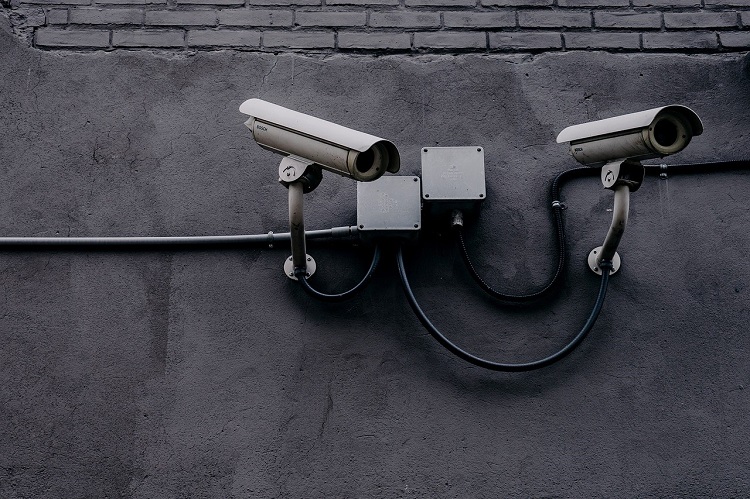As security systems become more complex and integral to organizational operations, the underlying network infrastructure is critical to ensuring overall system efficiency and security.
Consequently, this article explores how structured cabling provides foundational support to security systems, enabling enhanced performance, scalability, and reliability. We highlight why meticulous planning and implementation of structured cabling are indispensable.
Table of Contents
Benefits of Enhancing Security Through Structured Cabling
Reliability and Stability
Using a methodical and uniform design reduces the complexity inherent in wiring networks. Hence, it minimizes the potential for errors and downtime. This uniformity allows for easier troubleshooting and quicker resolution of issues, ensuring that security systems have maximum uptime and minimal interruption.
On top of that, structured cabling solutions support high bandwidth. It’s necessary for the high data loads required by modern security systems, including real-time video surveillance, biometric scans, and continuous monitoring services.
This capability ensures that the data flows smoothly and reliably, reducing the risk of system overloads or failures that could compromise security. Data flows through the least congested and shortest possible routes, reducing latency and improving the timeliness of the data received.
Therefore, security personnel can receive real-time alerts without delays, enabling quicker decision-making and response to potential security breaches or anomalies. Furthermore, the high bandwidth capabilities ensure they can handle simultaneous transmissions from multiple devices without throttling.
The physical robustness of structured cabling also contributes to its reliability because high-quality cables and components withstand physical and environmental stress. Hence, it reduces the likelihood of failure further.
Scalability and Flexibility
Structured cabling is a future-proof solution that facilitates the scalability and upgradeability of security systems. Its modular design is one of its greatest strengths, allowing organizations to expand or modify their security setups with minimal disruption and cost. As new technologies emerge or data demands increase, structured cabling can accommodate these changes without an extensive infrastructure overhaul.
Each component of a structured cabling system is standardized and designed to interoperate seamlessly. This standardization means you can add new devices like additional surveillance cameras or more advanced sensors easily and efficiently. In addition, the system’s clear and organized layout reduces the complexity of integrating new technologies, which speeds up the expansion process and reduces labor costs.
Furthermore, as security systems become more data-intensive, the infrastructure can handle this increase without degradation in performance since structured cabling supports a wide range of data types and higher bandwidths.
Reduced Interference
Electromagnetic interference (EMI) can disrupt signal quality and transmission, potentially leading to data errors, communication failures, and compromised security systems. However, structured cabling uses shielded cables and precise installation techniques that mitigate these risks.
Shielded twisted pair (STP) and fiber optic cables are popular options. These STP cables have an additional layer of conductive material as a barrier against external electromagnetic fields. On the other hand, fiber optic cables use light to transmit data and are inherently immune to electromagnetic interference.
Furthermore, the layout and organization inherent in structured cabling also play a role in reducing EMI. Cables are arranged perpendicularly rather than parallel to power lines, which decreases electromagnetic influence. Proper grounding and bonding practices are rigorously applied during installation to neutralize potential interference.
Return on Investment
The initial cost of high-quality structured cabling might be higher, but the return on investment (ROI) becomes evident when you analyze the maintenance costs.
For example, these systems use superior materials and adhere to strict standards, ensuring they can handle increased data loads and connectivity demands of modern technology without frequent breakdowns or performance issues. It reduces the need for ongoing maintenance and the frequency of upgrades, which can be costly.
Additionally, the stability of these systems means less operational interruption, which translates directly into cost savings by maintaining productivity and safeguarding revenue streams. These systems also make IT budgeting manageable and predictable.
Ease of Management and Maintenance
Structured cabling systems are meticulously designed with clear and logical layouts, making it easier for technicians to identify, access, and rectify any issues.
On top of that, there’s proper labeling and mapping of each cable and connection in a structured cabling system. It enables technicians to quickly pinpoint the location of faults without wasting time tracing lines or guessing connections. In addition, since this direct approach accelerates repairs, it reduces the likelihood of further disruptions caused by trial and error during diagnostics.
Moreover, the modular nature of structured cabling systems allows specific sections to be isolated and addressed without impacting the entire infrastructure.
Conclusion
By providing a robust, reliable foundation, structured cabling ensures security systems operate efficiently and effectively, with minimal downtime and enhanced performance. Its capacity for easy scalability allows organizations to adapt to evolving technological landscapes, accommodating new devices and higher data loads without major infrastructural upheavals.
In addition, the inherent design features of structured cabling—such as reduced electromagnetic interference and a well-organized layout—greatly facilitate maintenance and troubleshooting, ensuring swift responses to security incidents. As security threats grow more sophisticated, investing in a meticulously planned structured cabling system is imperative.

